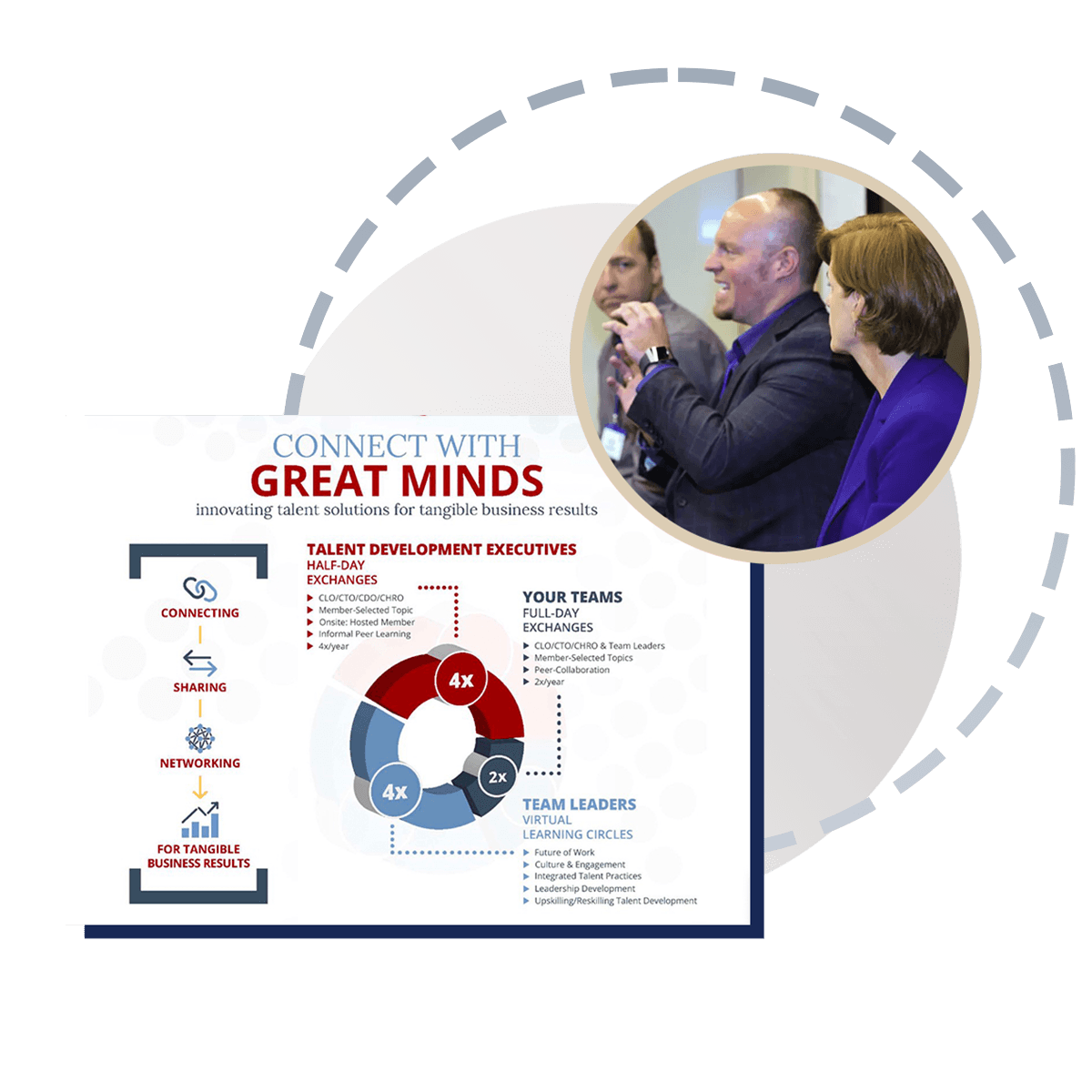This moment video is from October 03, 2025 session Innovate and Adapt: Reimagining Talent Development for a Changing Workforce
The workforce is changing fast—with an estimated 78 million new jobs expected globally by 2030, widening skill gaps, and the rise of AI as a “cognitive industrial revolution.” In this environment, adaptability isn’t optional; it’s the core of how we work.
This video discussion provided a powerful reminder: in a world accelerating with AI, change, and complexity, adaptability starts—and ends—with people.
“Even in the age of AI, we’re human beings at heart—and our work must always be human-focused.” — Jennifer Rainey, Abbott
Jennifer challenged us to rethink empathy not as sentiment, but as a strategic tool for leading transformation. When teams feel seen and supported, agility follows naturally.
From redefining inclusion to designing AI-enabled learning that stays human-centered, participants explored how connection and adaptability go hand in hand. This conversation offered practical, human-centered strategies for building future-ready talent systems—where empathy fuels innovation, belonging drives performance, and AI enhances (not replaces) human judgment.
🔑 Key Takeaways
-
Empathy drives performance. It’s the foundation for psychological safety, inclusion, and innovation.
-
AI should amplify, not replace. Use it to personalize learning, surface insights, and scale capability.
-
Connection is a KPI. Loneliness and isolation are now measurable business risks in hybrid workplaces.
-
Agility defines success. Build just-in-time learning labs and iterate like product teams do.
-
Inclusion must evolve. Extend belonging to neurodivergent employees, caregivers, and all who work differently.
-
Transforming culture starts with being human. Azizeh Elias Constantinescu expands on this in her latest book, which shows how servant leadership and empathy can heal toxic cultures and help people—and performance—flourish.

Becoming a Human Organization: Transforming Work, Touching Lives
🚀 Practical Actions
-
Integrate empathy mapping into change and learning design to see programs through your employees’ eyes.
-
Equip managers as connection multipliers who create psychological safety and trust.
-
Use AI tools like Copilot or NotebookLM to automate administrative tasks and personalize development.
-
Redesign “return-to-office” strategies around purposeful moments that matter, not attendance metrics.
-
Launch bite-sized learning labs to close emerging skills gaps quickly and keep capability building continuous.
In an era when technology moves faster than people can adapt, empathy becomes a competitive advantage.
Jennifer’s words still resonate: empathy isn’t soft—it’s strategic.
Join the ongoing conversation in the ELE Idea Exchange as we explore how empathy, AI, and adaptability are reshaping talent development.
